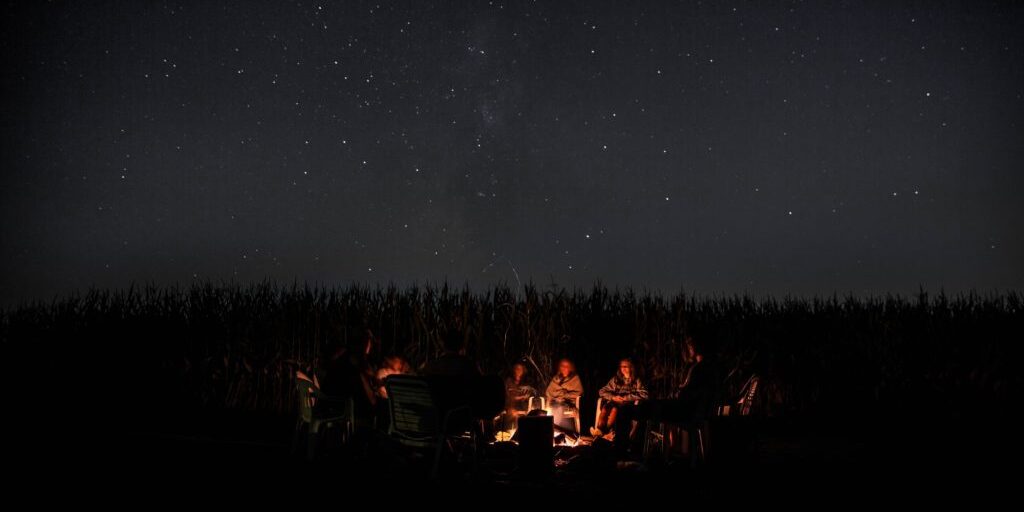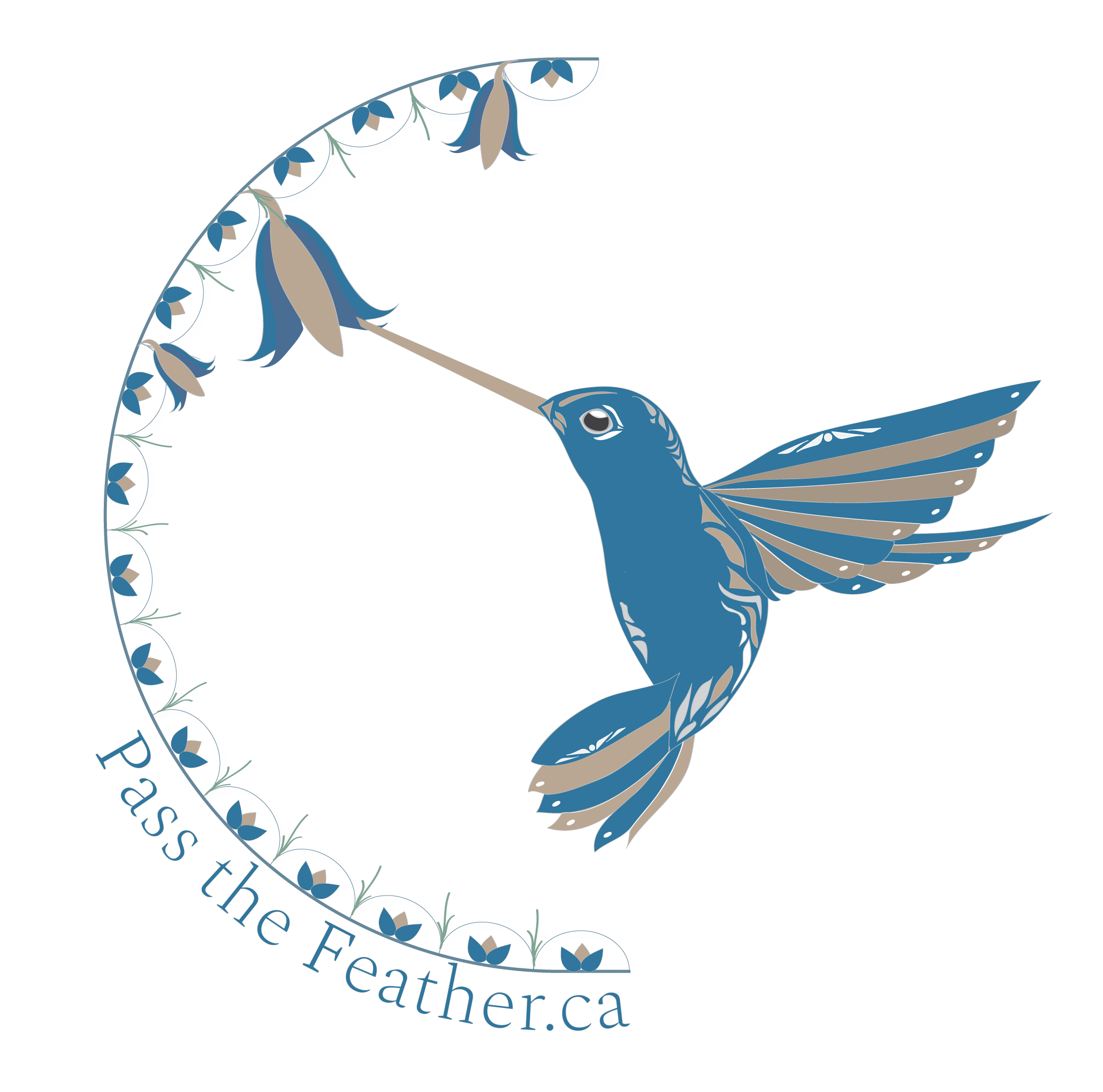Talking Feathers for Sharing and Restorative Justice Circles
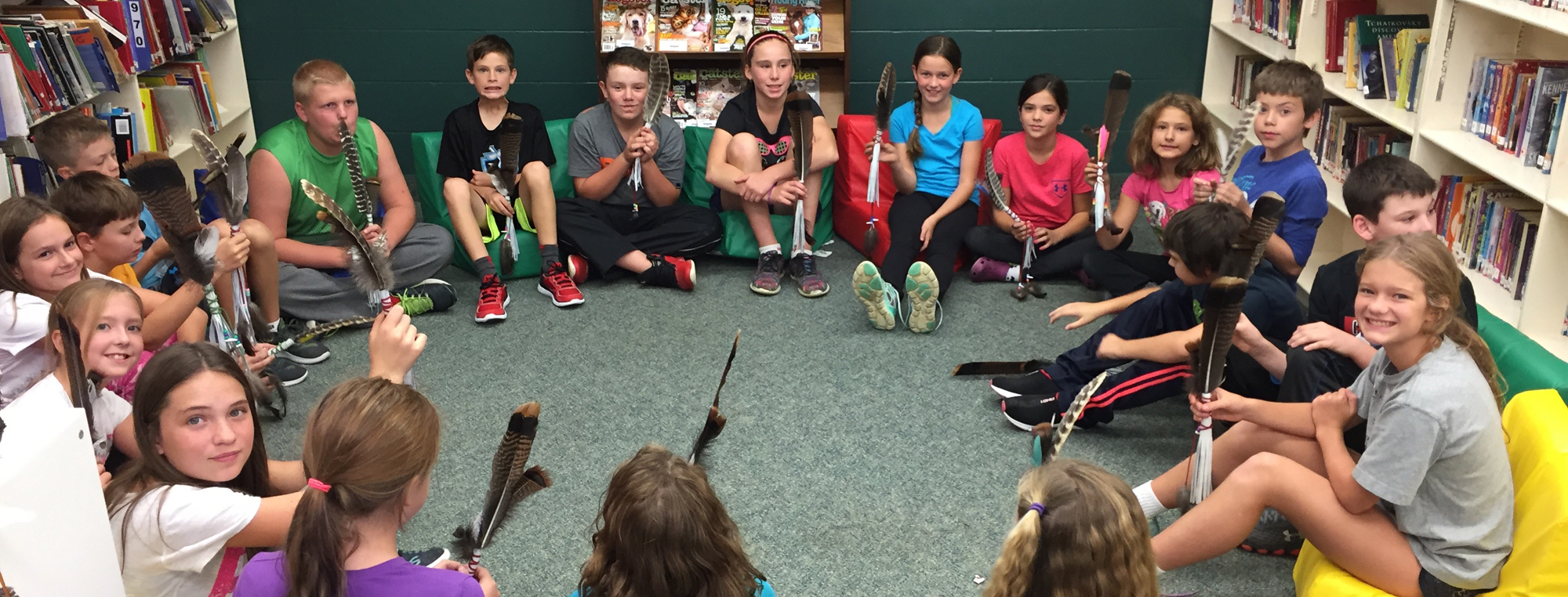
Value of Circles
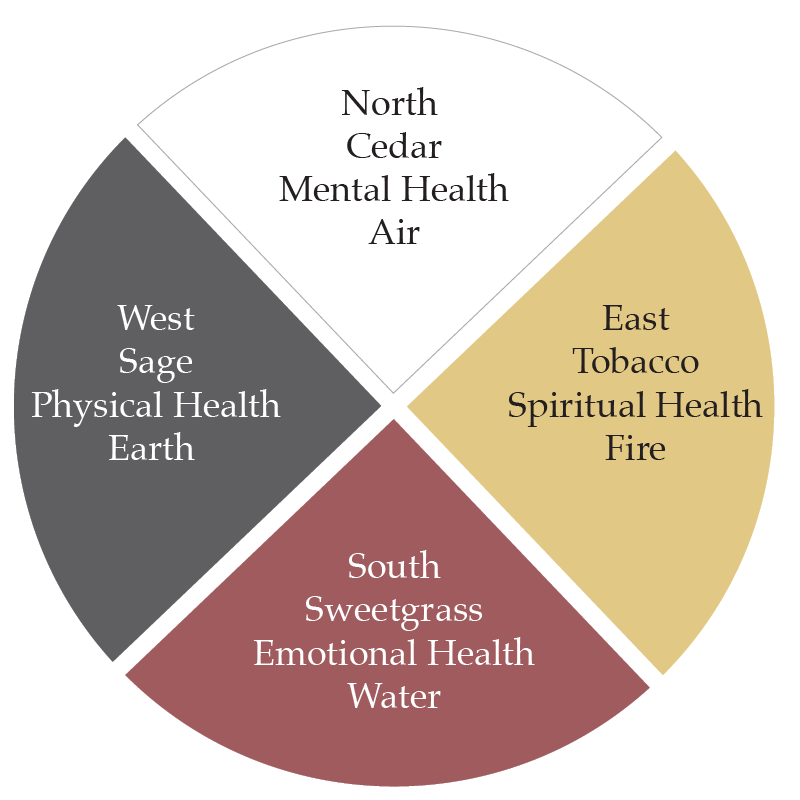
The circle influences how Indigenous people view the world. That is, how all things are connected. Balance relies on this connection and without balance, health is compromised.
Everything in circles; cycles. The sun, the moon, the seasons, the journey of our lives from birth to death. Circles are a natural way to walk your path and conduct your life and align with the fundamentals of the natural world.
Indigenous ways of knowing use and interpret the circle in many different ways but with the same good intentions. The medicine circle (wheel) is used as a diagram for everything from the four directions, a path to health and wellness, the connection between the human races of Mother Earth as well as the cycles of life, seasons and medicines.
The circle is whole and doesn't end; the circle can be unbalanced depending on what is in it or not in it. But in general, a circle is impartial, fair and representative of inter-connectivity and equality.
Sharing Circles
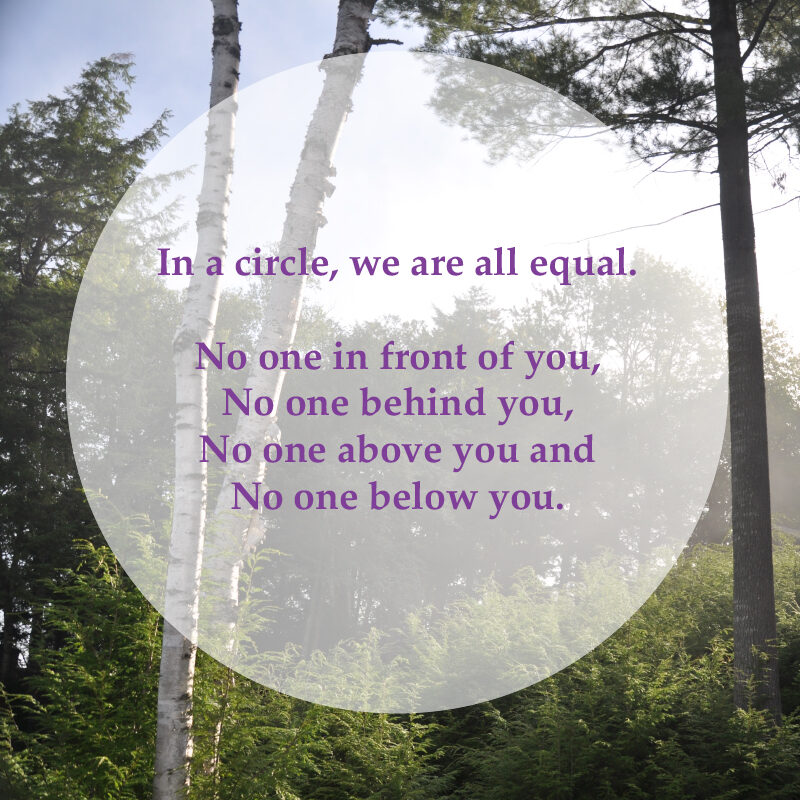
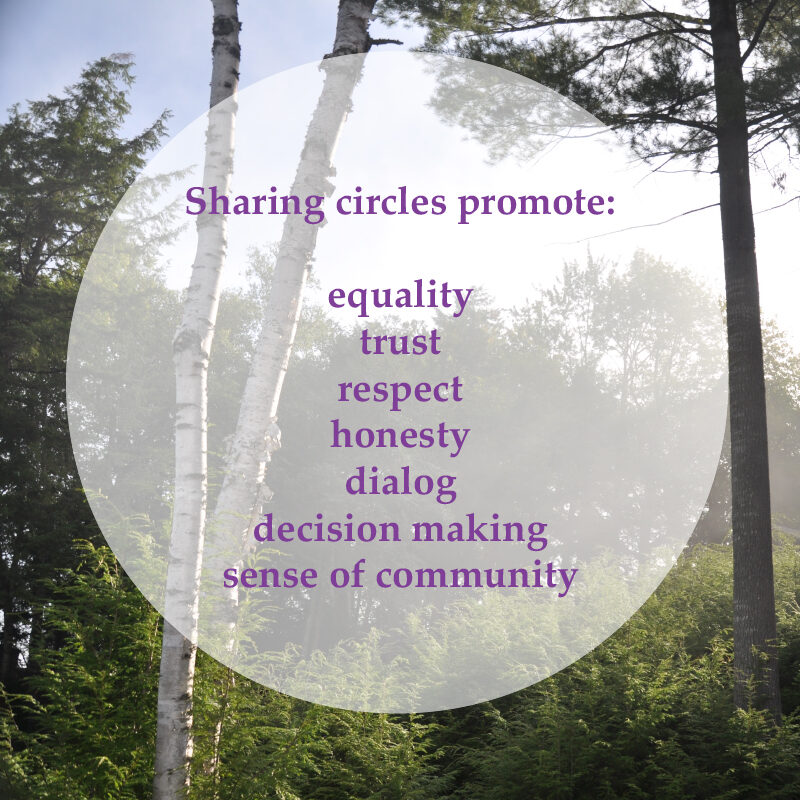
Elementary talking circle teachings use the circle for communicating the importance of our differences and to look at each other's strengths as an indicator of equality.
For example, a primary age sharing circle may begin with the participants expressing something that they are good at (math, sports, art). A second round of the circle will then ask the participants to admit that they aren't good at something.
The circle facilitator may then initiate discussion on what we may rely on each other for and create a sense of importance in living within a diverse community.
For example, Mary may not excel at art but is very good at science while John is not good at science and excels in art. If Mary becomes a doctor, John may some day need her help. If John becomes an educator, Mary's children may need him as a teacher.
Admitting your weaknesses promotes humility, bravery and honesty. Respect, wisdom, truth and love completes the circle when equality is established. You have now taught the Seven Grandfather Teachings; the qualities that collectively represent what is needed for community and ecosystemic survival.
Sharing or talking circles provide an opportunity for each and every person to be heard - whether they choose to speak or not. Sometimes not speaking speaks volumes.
Sharing Circle Protocols

- Determine what your circle will use as a talking piece. Usually an item from nature is preferred such as a stick or feather.
- Determine the facilitator. A facilitator is usually the teacher or an Elder. The facilitator will be the keeper of the talking piece, open the circle and close the circle.
- Determine what is in the middle of your circle. Some circles surround a fire, some surround sacred medicines, pipes or smudging tools. In elementary school circles, often participants are comforted by a bowl of colourful stones or water. This offers a calming distraction to young people and may help them to be more comfortable in sharing.
- Determine the direction of your circle. This usually depends on the Indigenous territory that you are in: If you are in Haudenosaunee (Iroquois) territory, your circle will most likely go counter-clockwise with the moon. If you are in Anishinaabek territory, your circle will most likely go clockwise with the sun.
- Participants will enter the circle single file by walking the perimeter in the established direction and not across the middle.
- It is not acceptable to bring any material objects with you into the circle. Your focus is on listening and learning.
The Circle
The facilitator or Elder will open or begin the circle by holding the talking piece and welcoming the participants.
Often the facilitator will open with an introduction, land acknowledgment and comment on the topic of the discussion.
The facilitator may remind participants that:
- Whoever is holding the talking piece is encouraged to speak freely about personal feelings and opinions.
- Speakers are asked to be respectful of other people's time.
- When the speaker is finished, the talking piece is passed in the appropriate direction to the next participant.
- Listeners are not to speak, interrupt or display any reactions to the speaker's feelings or opinions.
- Listeners are encouraged not to judge but be open to learning from each speaker and accept differences of opinion as valuable.
- Participants do not have to speak and can pass the talking piece to the next participant.
- Outside of the circle, participants are not permitted to repeat what is shared by other participants. What is said in the circle, stays in the circle.
Often at this time the facilitator or helper will walk around the circle with a bowl of medicines so that each participant has an opportunity to smudge. This may be repeated at the end of the circle before closing comments.
If there is a fire in the middle of the circle, participants may offer medicines such as tobacco or cedar to the fire from each of the four directions.
During the sharing circle process, a participant may choose not to speak and can pass the talking piece to the next participant. Often when one chooses to say nothing, they are in fact, speaking volumes.
If all participants that have chosen to speak are finished, the circle will end with the faciltator holding the talking piece.
Everyone who didn't speak should be offered another opportunity. It is okay to pass the talking piece back around the circle to that person, should they choose to speak. Keep the talking piece going in the same direction at all times.
Once everyone has had an opportunity to speak, the talking piece is back in the hands of the facilitator. Usually facilitators will close the circle with a short reflection on the subject matter and encouraging words for participants.
At this time, often the facilitator or a helper will return with the medicines and offer another smudge.
Only once the facilitator is done speaking and puts down the feather are participants able to talk freely or leave the circle.
Participants should leave the circle in the same manner as entering: single file in the same direction as the speaking process.
Resorative Justice
Circles provide a space for encounters between victims and offenders and includes the community in the decision making process.
In educational settings, the process empowers the classroom and/or school community to be involved in solutions and consequences and explores what led up to or the reasons for the behavour.
In reaching this end, the circle process can build on values such as truth, respect, honesty, humility, bravery, wisdom and love and can bring healing and understanding to both the offender and the victim.
Restorative justice circle practices are safe, controlled environments that focus on the effects that the behaviour has on the community or classroom.
There are many amazing resources written by highly qualified individuals that will better explain restorative justice in both the classroom and community. Here, I will only reach out to say that this methodology provides culturally relevant methods of intervention and services benefiting victims, communities and offenders.
Resources:
I Am A Kind Man, An amazing resource for children. http://www.iamakindman.ca/IAKMKids/
Seven Grandfathers Education Institute
I: INDIGENOUS CONTEXTS FOR RESPONDING TO CHALLENGING BEHAVIOUR: CONTRASTING WESTERN ACCOUNTABILITY WITH MAORI RESTORATION OF HARMONY
Restorative Justice Community/Classroom ConferencingA guide for parents and teachers
Authors: Nicole Pakan &
The Society for Safe and Caring Schools and Communities
http://safeandcaring.ca/wp-content/uploads/2013/08/Restorative-Justice-booklet-Web-version.pdf
